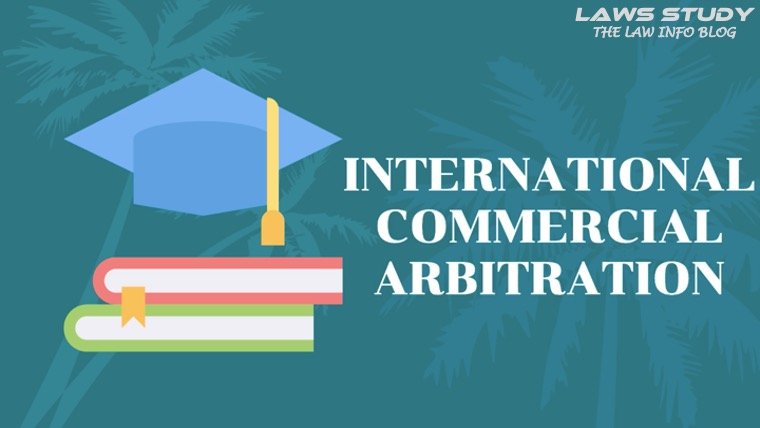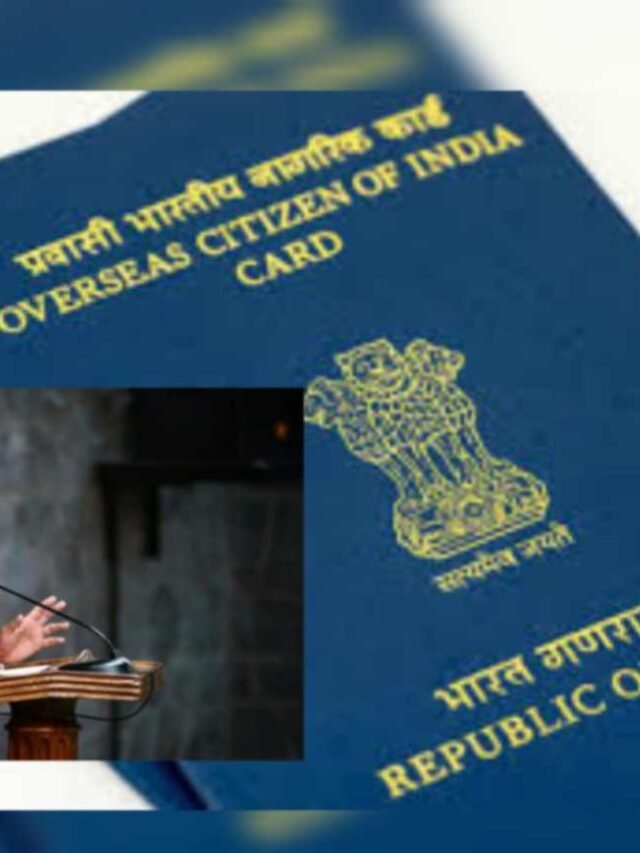Introduction of the International Commercial Arbitration:- One of the UN’s largest international trade law treaties and the cornerstone of international arbitration was the Convention for the Recognition and Implementation of Foreign Arbitration Awards (NYC, 1958), better known as the New York Convention.
The States undertake to apply the arbitration clause under the New York Convention and to recognize and impose awards in other states. A Recommendation was adopted in 2006, referring to the interpretation pursuant to Article II(2) and Article VII(1), and the UNCITRAL Secretariat’s Guide to the New York Convention was published in 2016.
The first edition of Notes on Arbitration Organization was adopted by UNCITRAL in 1996 and the second one in 2016. The Notes list and explain issues that can be used generally and universally for the organization’s objectives of arbitral proceedings.
The United Nations arbitration rules were initially adopted in 1976 and amended in 2010, providing for a comprehensive set of procedural rules for arbitration and are applied widely both ad hoc and in institutions.
Recommendations have been put in place on both occasions for helping the arbitration process and other interested authorities follow the text and the content of the rules.
In 2013 the Rules have been further revised by incorporating the United Nations Convention on Transparency in the Treaty-based Arbitration of Investors and State Arbitration (UNCITRAL), as promoted by the Treaty-based Investor-State-Arbitration Convention on Transparency (New York 2014) and the Mauritius Treaty on Transparency.
ART. 8 OF THE TRANSPARENCY RULES ESTABLISHES A DATA SOURCE OF PUBLIC INFORMATION.
The Mauritius Transparency Convention was adopted in 2017. In the context of transparency-related obligations, the Convention has established a new and efficient mechanism to supplement existing (by April 2014) investment treaties.
The Model Law of UNCITRAL was enacted in 1985 and then amended in 2006. It serves as a foundation for the desired harmonization and elaboration of national laws covering all phases of the arbitral award.

History of the International Commercial Arbitration
The background of the international Alternative Dispute Resolution forum can be directly traced to the Renaissance when Catholic Church leaders served as arbitrators in resolving conflicts between European countries.
International law can be established in a variety of ways, the most common of which are both national and international adjudicative bodies. In particular, the character of most inter-state dispute resolution as a form of agreed-upon arbitration became visible in the context of international courts and tribunals.
Traditional inter-State adjudication provides the procedurally appropriate means for States Parties to facilitate their desire to resolve the matter flexibly. While international courts represent a national model for fixed lex fori proceedings, the proceedings authority is generally responsible, never are they distinctively exercised against the States parties.
The fundamental idea is not to implement and enforce overarching international law but to facilitate a settlement of disputes.
International Efforts to Advance Alternative Dispute Resolution
One of the principal reasons for this international award was the scarcity of authority given to international courts and tribunals in the least meager and rare acquiescence of countries to competences in accordance with Article 36(2) of the ICJ Statute.
No execution of judgments against the debtor’s will may be expected. The other main reason is that incoherent structure in international law is more appropriate and ready to resolve disputes than to impose coherent doctrines which the States rarely endorse.
For example, in resolving a long-running commercial dispute between General Motors and Johnson Matthey Inc. among several cooperative members. which has remained pending at the US District Court over the last few years, ADR has produced results not only in the international political arena but also in the international corporate world.
In the American and European trade communities, ADR is now an increasingly accepted reform tool in dispute management. As a cooperative problem-solving system ADR can be considered. ADR is an alternative to adjudication, for example, arbitration annexed to the court or conciliation annexed to the court, but the court procedures may be complementary.
There was a time when civil disputes were considered time-consuming and costly ways of exercising justice and commercial persons preferred to use arbitration. In the United States, the United Kingdom, Canada, Hong Kong, & Australia, ADR has gained prominence and popularity for its efficiency, expense, and speedy dispute settlement.
It was found that ADR can lead to better outcomes than conventional courts because the first different types of disputes may widely cover types of approaches that may not be available in the court system.
Second, direct participation and strong participation of parties in negotiations to reach a settlement are major factors in resorting to ADR techniques to resolve disputes.
The third benefit of ADR’s acceptance is the intervention of a neutral qualified advisor, who is often very helpful to find a solution.
Increasing global trade growth and delayed disposal of cases in courts under the ordinary systems in different countries made it mandatory to understand, in relation to the aspect of trade disputes, the Alternative Dispute Resolution System (ADRS).
In 1985, the U.N Commission for International Trade Law adopted the UNCITRAL for International Commercial Arbitration when the whole world propounded speedy resolution of trade disputes. Several countries have since acknowledged it in their respective legislative strategies.
An essential aspect of the model is that arbitration and conciliation have been harmonized in order to determine it as universally applicable.
International Conventions and Treaties
In the 1923 Geneva Protocol
In Arbitrations clauses, the contracting parties agree to arbitrate all or any differences arising from the contract, irrespective of whether they are concerned with existing or future differences between the parties under the jurisdiction of the various contracting countries.
As a consequence, each Contracting State absolutely has the right in this Protocol to limit the above-mentioned liability to contract terms that are recognized commercial within its national law.
Geneva Convention, 1927
Referring to the International Arbitral Awards (1927):
An arbitral award is established in respect of any High Contracting party whose territory this Convention applies in respect of differences between the parties under the Protocol to Arbitration clauses, opened in Geneva (hereinafter referred to as “submission to arbitration”).
On September 24, 1923, it will be recognized as binding and enforceable under the rules and processes of the area where the decision is made, in the region of one of the Parties To This agreement to which it applies, and as a competence of a High Contracting Party. In addition, certain requirements must be satisfied for this recognition or enforcement.
This Convention only covers arbitral awards issued after the entry into force in Genève on 24 September 1923 of the Protocol on Arbitrators Clauses. . Unless specifically clarified, the provisions do not apply to the suzerainty or mandate of any highly contracting party’s colonies, protectorates or territories.
New York Agreement, 1958
Convention of Foreign Arbitration Awards Recognition and Enforcement
The Convention on Foreign Arbitral Arbitration and Enforcement or, more importantly, the New York Convention aims at providing common legal standards for the recognition and recognition of arbitration agreements and tribunal recognition and is treated, as a result of some, as a “foreign country” according to its legislation, recognizing the increasing importance for settling disputes of international arbitration
The principal aim of the Convention is not to discriminate against foreign and non-domestic arbitration awards, and it compels parties to ensure that these awards are recognized and generally compatible with domestic awards. The Convention is an additional objective of requiring courts of parties, in comparison to their agreement, to grant full impact to arbitration agreements by authorizing courts to prevent parties from having an access to the court.
Geneva Convention (1961)
Arbitration agreements are entered into to resolve disputes relating to international trade between legal and physical individuals holding their habitual place of residence or seats in the various Contracting States at the time of the conclusion of the agreement.
Paris Agreement, 1962
The Paris Convention (Paris Agreement) on the Implementation of the International Trade Arbitration Convention (1962):
The Council of Europe’s member states shall be eligible to sign this agreement. It must be approved or ratified. Ratification or acceptance instruments must be deposited with the Council of Europe’s Secretary-General.
ICSID Convention, 1965
In 1965, the Washington Convention on the Recognition & Enforcement of Foreign Differences (ICSID Convention) was adopted between nations & international.
The International Investment Dispute Resolution Centre, which was signed in Washington on March 18, 1965, was established by an Investment Differences Convention in the Group of the World Bank (ICSID). The Contracting States and foreign investors have the mission of the Center through mediation and arbitration to resolve disputes.
The ICSID allows for the arbitration and conciliation of States and foreign investors in an international institutional structure to resolve their conflicts on an equal basis.
Moscow Convention, 1972
The Moscow Convention of 1972 on the settlement of disputes arising from economic and scientific cooperation (Moscow Convention) through civil law arbitration:
Within this case, subject to arbitral proceedings and excluding the aforementioned disputes and conflicts, the Convention shall exclude any argument arising between financial institutions arising from contractual and other cases arising between them Countries Parties to the Convention must operate together on economic & research issues.
Panama Convention, 1975
International Trade Arbitration Convention (Panama Convention)in 1975:
One of the main arbitrary conventions of the American continent was the Inter-American Convention on International Trade Arbitration, which was signed on 30 January 1975 in Panama. The New York Convention on the Recognition & Execution of Foreign Arbitration Awards and the Convention on the Extraterritorial Validity of Extraterritorial Justice and Arbitral Awards, both signed by Montevideo on 8 May 1979, and the Conference on the International treaty Validity of International treaty Justice & Arbitral Awards, both signed on 12 June 1958, are two other specific provisions.
UNCITRAL Rule, 1976
The UNCITRAL Arbitration Rules are implemented on 28 April 1976 and provide for an extensive set of UNCITRAL procedural rules that are widely utilized both in ad-hoc arbitration and in arbitration. The Regulations shall cover all aspects of the arbitration procedure, lay down a model arbitration clause, lay down procedural rules for arbitrator appointment and conduct, and set out rules governing the form, effect, and interpretation of an award.
Model Law, 2002
UNCITRAL Model Law with Guide for the Implementation and Use of International Trade conciliation(2002):
Under the Model Law adopted by UNCITRAL on 24 June 2002, the conciliation procedure is subject to uniform rules, which promote the use of conciliation and ensure better predictive ability and surety in its use.
The model law is concerned with legal provisions of conciliation, along with the appositions of conciliators, commencement, and conclusion of conciliation, the conciliators’ discussions with other parties, anonymity, admissibility, and post-conciliation evidence to avoid uncertainty due to the lack of statutory provisions.
UNCITRAL Recommendation, 2006
Recommendations for interpretations under Article II(2) and Article VII(1)(2006).
UNCITRAL adopted the Recommendation on 7 July 2006. It has been drafted in recognition of the widespread use of e-commerce and enacted domestic law, and jurisprudence that is more favorable than compliance with the New York Convention respects the form of requirement for arbitration agreements, arbitration, and execution of arbitration awards.
Various ADR international organizations and agencies
In 1926, A.A.A (American Arbitration Association) was formed. It is a binding arbitration organization and is one of the arbitration’s administrators… It also governs mediation and other alternate forms of settlement. (located in N.Y city)
In 1996, A.A.A. developed the International Center for Dispute Resolution (ICDR) to handle international cases brought under the institution’s regulations. Currently, the ICDR and its headquarters are in New York City. Ireland, Bahrain, Dublin, and Mexico City have offices and an office is to be opened in Singapore.
In almost all private sector companies in over 130 countries, the International Chamber of Commerce (ICC) comprises hundreds of thousands of members.
1994 WIPO Arbitration and Mediation Centre, with its headquarters in Geneva, gives effective dispute resolution possibilities for commercial disputes between private parties (ADR).
The European Arbitration court is a legal person established in 1959 by the Alsace-Moselle Act. It guides arbitration & mediation. The arbitrators for the administration of arbitration nationally or overseas are the branches of the European Arbitration Center. Its branches are spread across Europe, including Eastern Europe, Mediterranean, Middle Eastern, and Black Seas countries.
Conclusion
Alternative dispute resolution is developing rapidly, offering simple methods at national and international levels to resolve disputes. A significant increase in ADR services can conveniently be invoked by an increase in the “arbitration clause” in the majority of contracts.
There has been a dramatic increase in the number of law education courses, graduate degrees, seminars, and so on to help resolve alternative disputes and to try and justify their effectiveness in processing a wide range of societal conflicts.
























